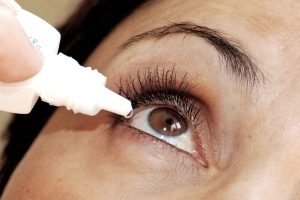 Treatment options for dry eyes include artificial tears, drops, and eye ointments. Dry eyes is a condition of insufficient tear production, which makes your eyes dry and feeling gritty as a result. There are numerous reasons for dry eyes, including allergies, poor tear quality, and even medications.
Treatment options for dry eyes include artificial tears, drops, and eye ointments. Dry eyes is a condition of insufficient tear production, which makes your eyes dry and feeling gritty as a result. There are numerous reasons for dry eyes, including allergies, poor tear quality, and even medications.
Dry eyes is a highly uncomfortable condition. Some people may experience burning, itchiness, and even temporary blurry vision. The condition itself may be temporary or chronic, depending on the cause.
Advertisement
Symptoms of dry eyes include blurred vision, stinging, burning sensation, increased irritation, eye fatigue, light sensitivity, redness, feeling of having something in your eye, and periods of excessive tearing.
Below we will outline the diagnostic methods for dry eyes along with the many different treatment options available.
Tests and diagnosis for detecting dry eyes
At first, your doctor will take into consideration your and then run a series of tests to uncover the potential cause of your dry eyes. Below you will find the common tests which can help diagnose dry eyes.
Fluorescein dye test: For this test, special eye drops containing a yellow dye are used in the eye, allowing the eye specialist to see tears more clearly. This test also helps determine how long it takes for your tears to dry out. If there is any damage on the surface of the eye, the dye will highlight these areas as well.
Schirmer’s test: Small blotting paper strips are hooked on the lower eyelid. After about five minutes, the strips are removed to detect any wetness from the eye. Strips that have accumulated less than 10mm of wetness in five minutes indicate dry eyes.
Lissamine green test: This is a special green dye on paper test. The strip is diluted with saline and then dropped on the surface of your eye. The green color of the strip allows for the specialist to detect damage to the surface of the eye.
Along with these tests, you will undergo a comprehensive eye exam.
Treatment options for dry eyes syndrome
There are different treatments available to combat dry eyes. For starters, treatment can target the underlying cause of your condition. For example, if dry eyes are a side effect of a medication you are on, your doctor may alter your dosage or recommend an alternative medication. If you have an eyelid condition, then you will be referred to a specialist who can address this issue.
Other treatments include the following:
Lubricant treatments: Many lubricant treatments are available without prescription and can come in the form of drops, gels, and ointments.
Preservative-free drops: If you have to use eye drops more than six times a day, then it’s best that you opt for a preservative-free eye drop. This is because using preservatives in the long run may actually damage the eye. Preservative-free drops are also recommended for soft contact lens wearers to keep them lubricated, because preservatives attach to the contacts, potentially damaging the eye.
‘Oily’ tear eye drops: These types of drops replenish the oily part of the tear film and reduce evaporation of the tears.
Eye ointments: Eye ointments are recommended to keep your eye moist while you sleep. They are recommended for overnight use because they can lead to blurry vision.
Anti-inflammatory treatments: Medications may be prescribed in order to treat underlying conditions, especially those that can lead to inflammation.
Corticosteroid eye drops and ointments: These are powerful anti-inflammatory medications that are only recommended for severe cases of dry eye syndrome.
Oral tetracyclines: These are low-dose anti-inflammatories that can be used for up to four months.
Advertisement
Ciclosporin eye drops: This medication suppresses the immune system and is often prescribed when other treatments have been unsuccessful.
Serum eye drops: These may be required in rare cases of dry eye syndrome where other medications have not worked. In order to make the serum, a blood sample is taken and the blood cells are removed from the sample. The remaining serum is diluted and used as eye drops. Preparing such eye drops is a long process that can take several months.
As you can see, there are many options to treat dry eyes, and your specialist can help you determine which mode of treatment will offer you the best relief.
